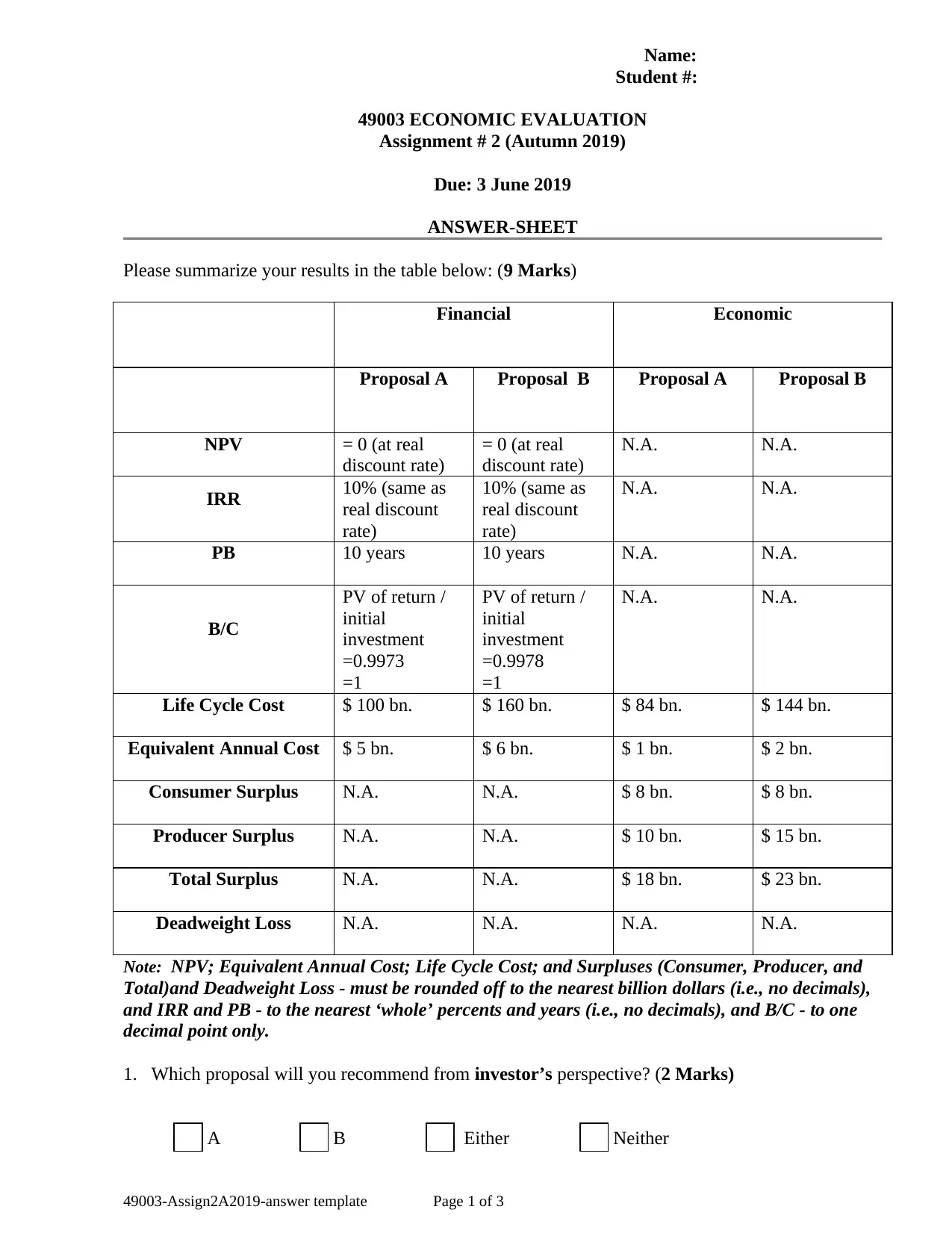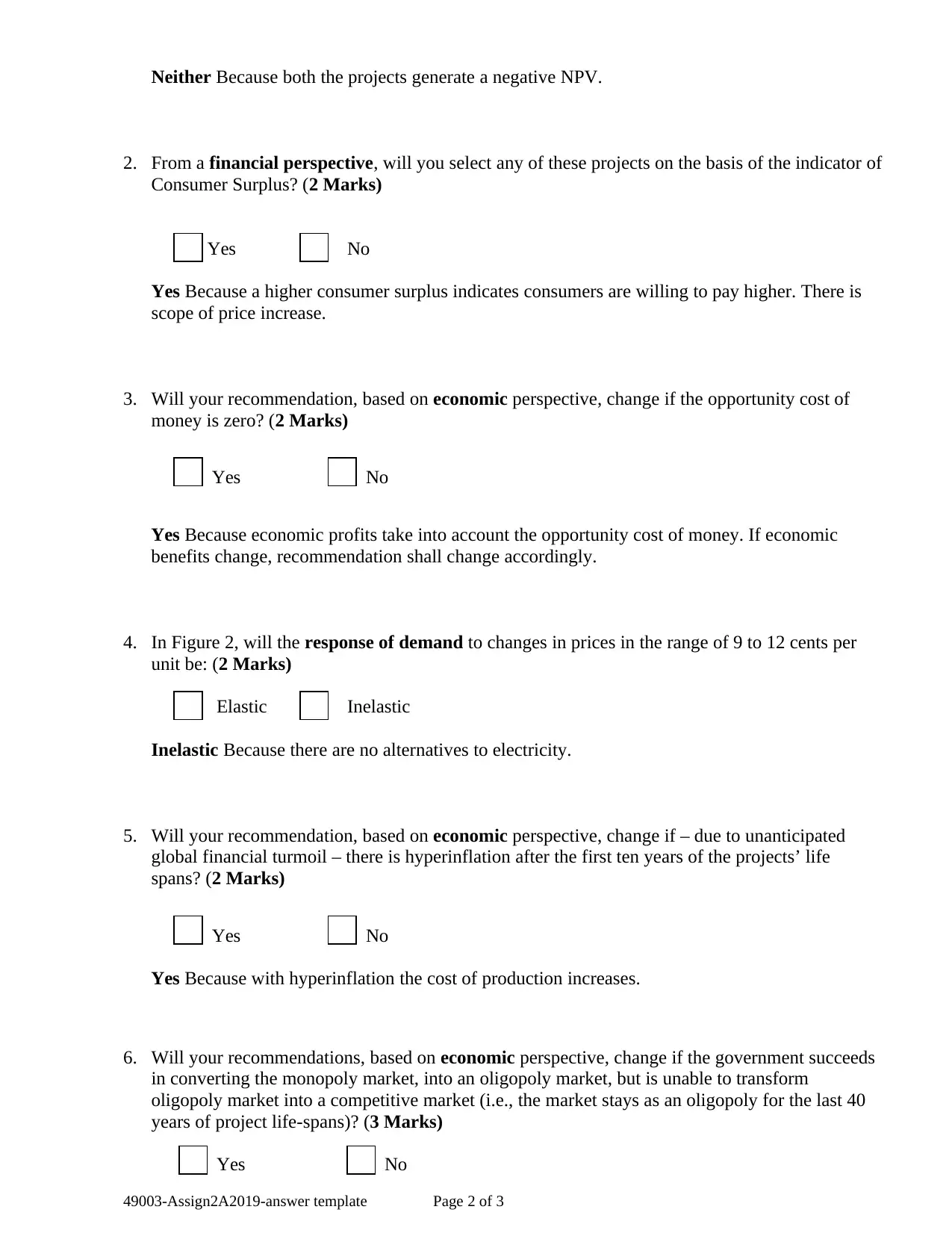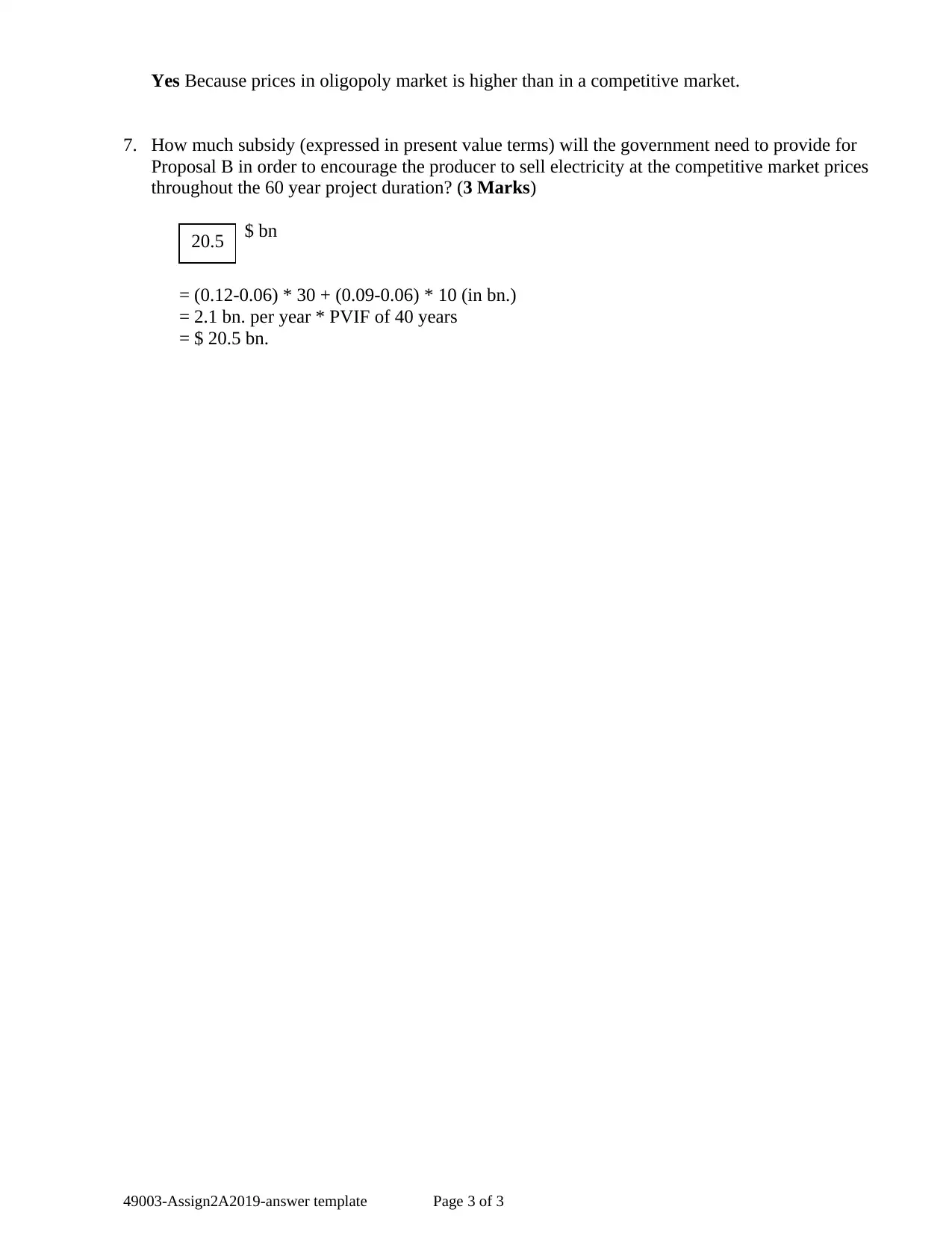Economic Evaluation Assignment 2
VerifiedAdded on 2022/12/29
|3
|658
|66
AI Summary
This document provides a summary of the results and recommendations for Economic Evaluation Assignment 2. It includes a comparison of proposals, analysis of consumer surplus, evaluation from an economic perspective, assessment of demand elasticity, consideration of hyperinflation, and calculation of the subsidy required for Proposal B.
Contribute Materials
Your contribution can guide someone’s learning journey. Share your
documents today.
1 out of 3









![[object Object]](/_next/static/media/star-bottom.7253800d.svg)